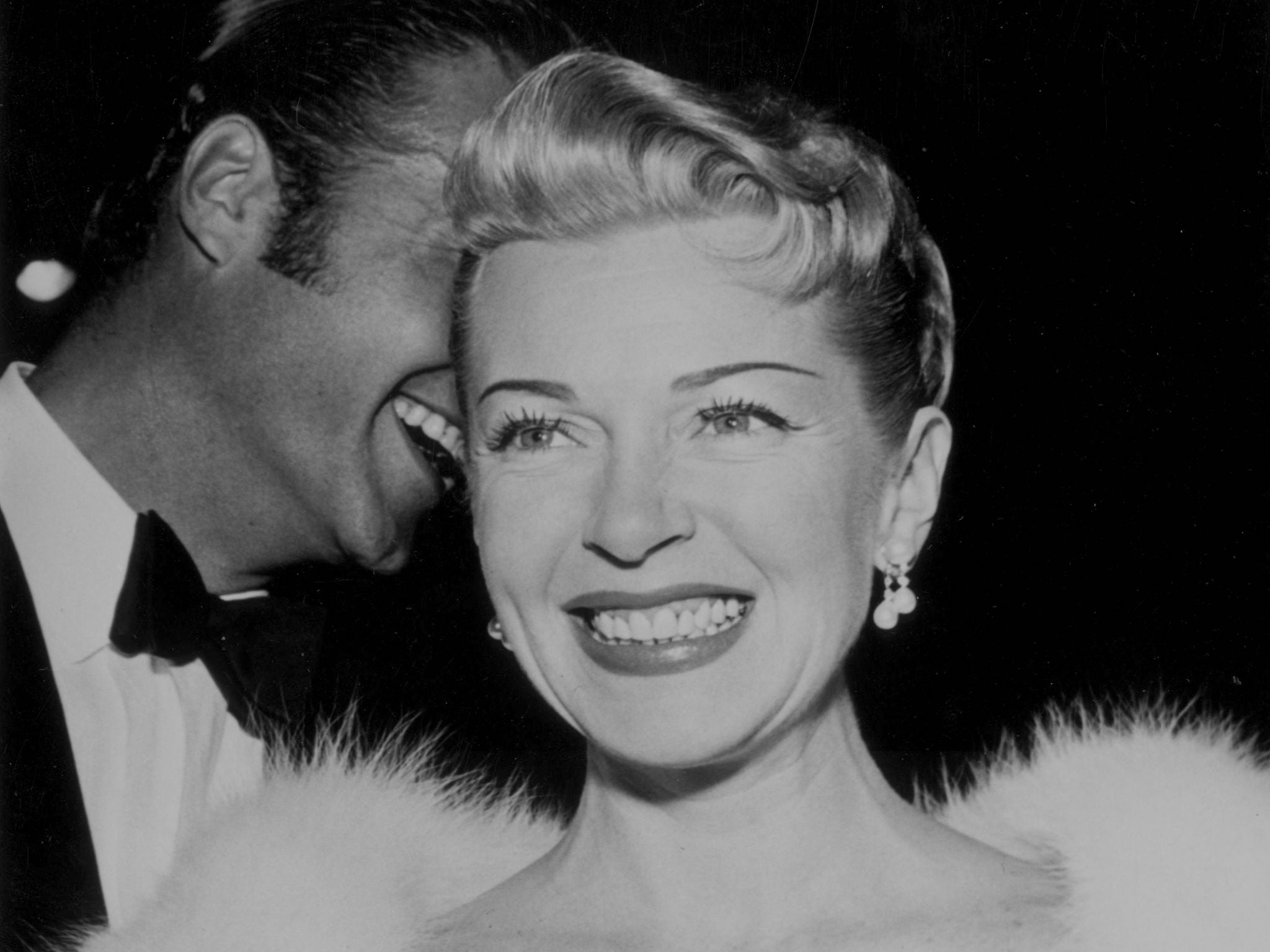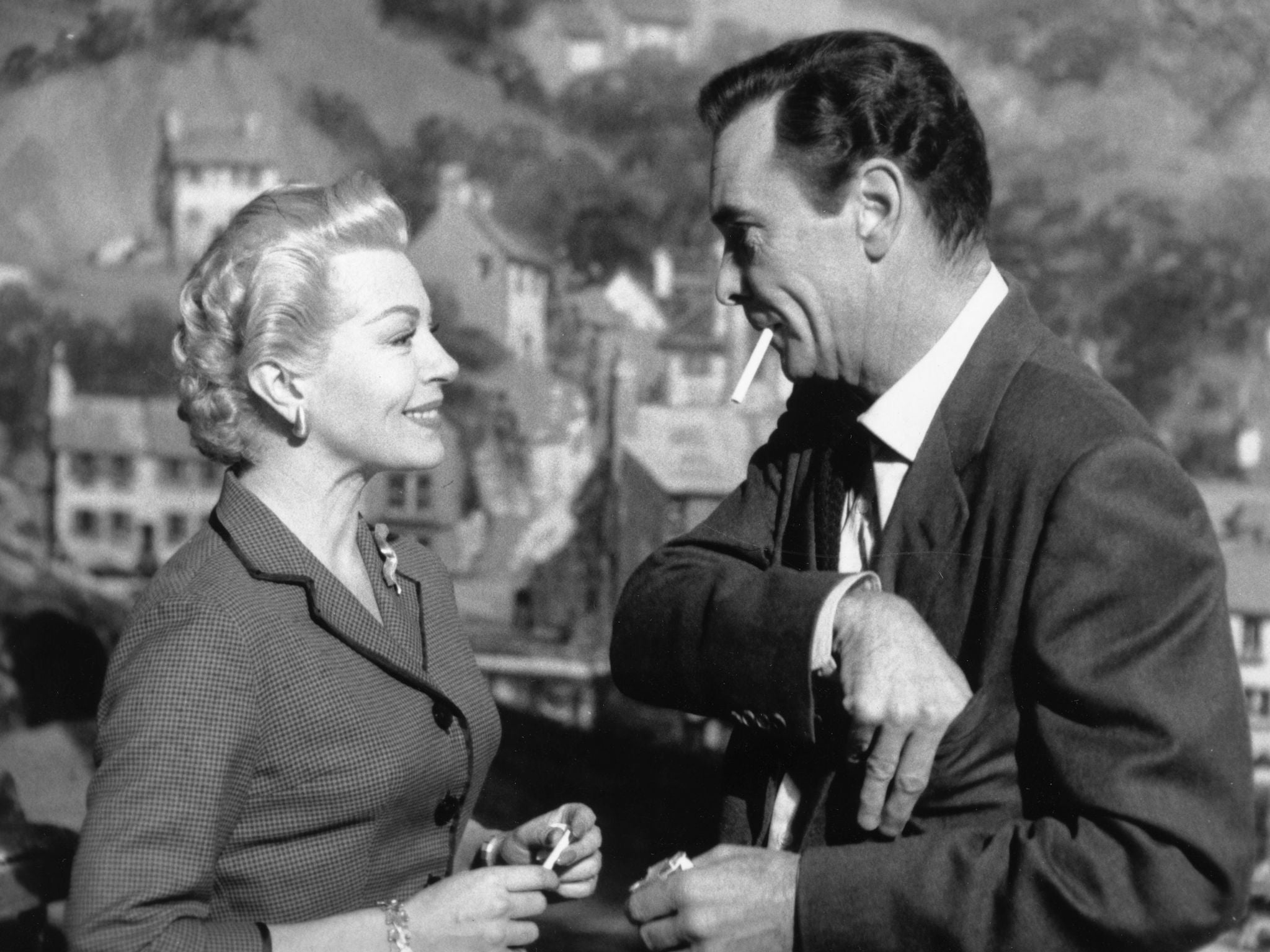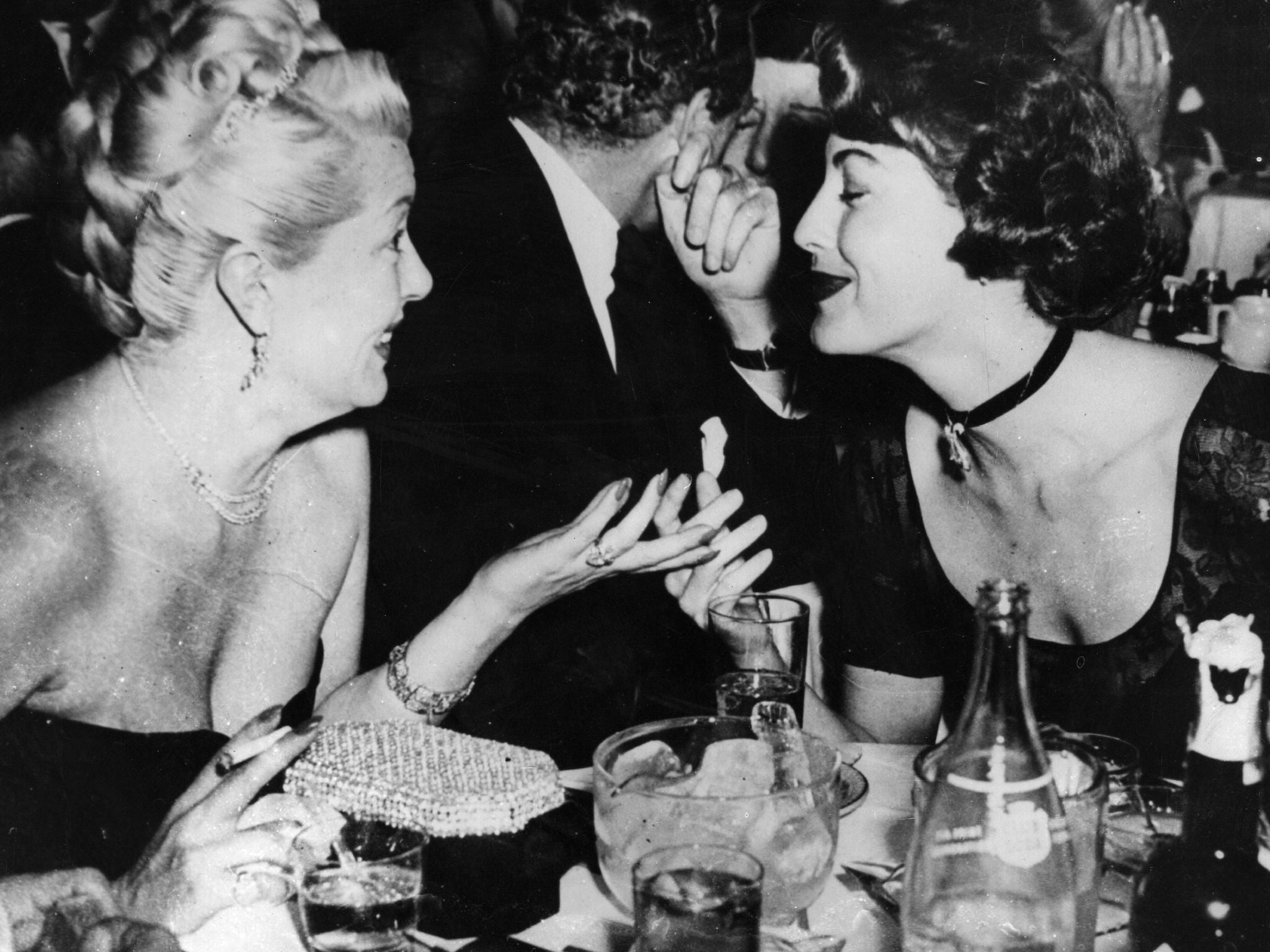Lana Turner: The volatile, legendary story of Hollywood’s first modern celebrity film star
Once known as the Sweater Girl thanks to a particularly tight jumper in her first role, Lana Turner went on to become an Oscar-winning star. Geoffrey Macnab chronicles the tumultuous career of Hollywood’s original blonde bombshell – and the equally turbulent personal life that threatened to eclipse it

“Would you like to be in the movies?” a stranger asks the 15-year-old girl sipping a Coke in a cafe near her Hollywood school. “I don’t know. I’d have to ask my mother,” she ingenuously replies.
This, Lana Turner later recalled, was how her career began.
Turner (1921-1995) has a fair claim as the first modern celebrity film star, and her private life was every bit as turbulent and colourful as the plot lines in her most outrageous on-screen melodramas. Long before the tabloid frenzy surrounding Angelina Jolie and Lindsay Lohan, Turner was obsessed over by gossip columnists as much as she was by film critics, who often sneered at her.
Like her near contemporary, Marilyn Monroe, Turner was the creation of an abusive Hollywood studio system that cared little for her wellbeing. She also had to change her name (from Julia “Judy” to Lana) and dye her hair blonde. Marilyn (the subject of new Netflix biopic Blonde, in which she is played by Ana De Armas) died of a drugs overdose aged only 36 after years of being exploited by Hollywood and by men. Turner, though, was a survivor who took the reversals in her professional and personal lives in her stride, sustaining a 50-year career.
From today’s vantage point, the story about her ”discovery” feels creepy. The stranger who approached her in that Hollywood cafe was Billy Wilkerson, businessman, nightclub owner and founder of The Hollywood Reporter. Wilkerson left his card. A family friend told Turner’s mother that he seemed “legitimate”. She called him up and went in for a meeting. Wilkerson paired Turner together with an agent, Zeppo Marx (brother of Groucho and Harpo), and a few months later she was under contract with director Mervyn LeRoy and co-starring in her first movie They Won’t Forget (1937). Turner may never have acted before, but the former cheerleader possessed what LeRoy called “flesh impact”. He put her in a tight sweater and presented her to audiences as “the sexual promise, the object of desire”. (It was telling, though, that her character, a voluptuous young student in a racist Southern town, was murdered after only a few minutes on screen).
Next month, one of Turner’s most successful pictures, Imitation of Life (1959), will be screened for thousands at the Locarno Film Festival. The film is showing in the town’s Piazza Grande as part of a tribute to its director, Douglas Sirk. And yet, nobody has ever been in any doubt that Imitation of Life is Lana Turner’s film. She started shooting it in the summer of 1958, aged 37, just a few months after the biggest scandal in an already scandal-ridden career. On Good Friday, 4 April 1958, her 14-year-old daughter Cheryl stabbed Turner’s lover, the small-time mobster and former bodyguard to gangster boss Mickey Cohen, Johnny Stompanato, to death.
The killing took place in the bedroom of Turner’s Beverly Hills home. Cheryl was protecting her mother; Stompanato’s death was ruled as justified homicide. Nonetheless, this was the “blackest period” of Turner’s life. The stabbing took place long before the advent of social media or celebrity gossip sites like TMZ, but it was exhaustively covered in newspapers around the world. It was a time when Turner and her daughter (as Turner wrote) became “notorious, the butt of sick jokes, vile rumours and malicious speculations”.
Turner’s 1982 memoir, Lana: The Lady, The Legend, The Truth, is striking for the brisk, no-nonsense way it deals both with her unlikely rise to stardom and the calamities that befell her: the suicide attempts, miscarriages, abortions, broken relationships and, of course, the Stompanato scandal.

When she was a child, Turner’s father was murdered by thugs after he won a substantial amount gambling. (He had been planning to spend the money, which he hid in his sock, on a bicycle for her). The future star came from a humble Idaho background but had famously extravagant tastes. After she started making money, she spent much of it on shoes. “Once I counted them all, and I owned 698 pairs,” she recalled.
Along with footwear, Turner collected husbands. She had a disastrous record with men, marrying seven times. “There is something ridiculous about a woman who takes seven husbands, as if she had rummaged through the drawers of masculinity and come up with seven dwarfs,” author John Updike pontificated in ‘Legendary Lana,’ a 1996 New Yorker essay about her. Turner felt inclined to agree. “I expected to have one husband and seven babies. Instead, I had seven husbands and one living baby,” she wrote in her autobiography. These husbands almost all treated her in an appalling fashion, sponging off and cheating on her. Most of them, she revealed, with her usual disarming candour, were lousy lovers.
If her husbands treated her badly, so did the critics. Many were openly sexist in the way they dismissed Turner. In his Biographical Dictionary of Cinema, David Thomson wrote that she “had the unanimated, sluggish carnality of a thick broad on the make”. Thompson compared her to a “small-town waitress… ready to be picked up by a toothbrush salesman”. Film critic David Shipman, in his book The Great Movie Stars, wrote that “Even her admirers would admit that she could not act her way out of a paper bag.”
These critics saw her performances through the prism of her private life. Turner was Hollywood’s equivalent to modern-day figures like Britney Spears and Jennifer Lopez. She was blue-collar, trashy and not to be taken seriously. Critics wrote more about what Shipman called Turner’s “excellent contours” than her acting skills. Meanwhile, gossip columnists had “a field day”, as she put it, with her private life.
John Updike, who admired Turner, responded with ironic understatement in his essay that there were, at least, two groups who actually did like her: “The people who made movies, and the people who went to them.” That was why she was, for a long period, among the highest-paid stars in Hollywood.
Whenever her star seemed to be sinking, Turner had the knack of re-emerging
When Melvyn LeRoy left Warner Bros for MGM, he took Turner with him. Aged 17, she was put under contract there, where she co-starred alongside Judy Garland in Love Finds Andy Hardy (1938) and Ziegfeld Girl (1941). In the latter, she is a lift attendant from a working-class background in Flatbush, Brooklyn, who becomes a big Broadway star. She turns to alcohol and ends up destroyed by her own celebrity. The plot seemed like a warning to a young Turner of what might happen to her if she strayed too far from her working-class roots.
Turner’s account of her time at MGM is revealing. The studio was ruthless. She writes of the sexual abuse of young starlets on six-month options who were “passed around the executive offices” but never given meaningful roles. As LeRoy’s protégée, she was treated with more respect. The studio cherished its big-name stars and she was one of the elite. Nonetheless, the work was gruelling and male directors could be brutal. When she once held up shooting on the 1941 version of Dr Jekyll and Mr Hyde because she couldn’t cry on cue, the director Victor Fleming became so impatient that he grabbed Turner’s arm, twisted it sharply and held it behind her back until “tears rolled down my face”.
Even more disturbing is her explanation of why she wore such long gloves when filming her 1952 musical The Merry Widow. “Filming began only a few days after my suicide attempt, and my slashed wrists remained bandaged for most of the shooting,” she explains in her usual down-to-earth fashion, as if this was a typical occurrence on movie sets at the time.

Turner could play both naive, all-American cheerleader types well as far darker figures, like her scheming, adulterous wife, a depression-era Lady Macbeth, in the 1946 version of The Postman Always Rings Twice. And whenever she seemed to be sinking, the star had the knack of re-emerging. In the mid-Fifties, MGM dropped her contract. She had begun to seem an anachronism, a figure from another era. The golden age of the studios was over; television was stealing away audiences from cinemas. It was at this point she played the seemingly respectable mother with a shady past in the big screen adaptation of Peyton Place (1957). She was nominated for an Oscar. The film was still on release at the time of Stompanato’s killing, and ticket sales shot up. Her popularity grew rather than diminished as a result of the scandal.
Turner’s decision immediately afterwards to take the role of a struggling but intensely Broadway actor Lora Meredith in Douglas Sirk’s Imitation of Life was gutsy in the extreme. Inevitably, the press and public saw an autobiographical element in the film’s portrayal of the actor and her teenage daughter. Rather than avoid the comparisons, Turner confronted them head on, holding an open day for the media at the start of the shoot.
Lora isn’t an altogether sympathetic figure. She puts her career ahead of her daughter’s happiness. She is strangely insensitive about the racism that her black friend and housekeeper Annie (Juanita Moore) endures on a daily basis, nor does she realise how patronisingly she herself behaves towards her. Her friend is always answering her phone calls and doing the domestic tasks while Lora is busy climbing the Broadway ladder. She is so enwrapped in her own ambitions that she is blind to the struggles of Annie’s daughter, Sarah Jane (Susan Kohner), who tries to pass herself off as white in order to be allowed the privileges that Lora and her family take for granted.
Turner gives a complex and revealing performance, very different from her earlier roles as teenagers in tight-fitting sweaters. Here, she plays a mature and driven woman with a selfish streak. She still looked as glamorous as ever, though. After years in Hollywood, Turner understood lighting and production design as well as any crew member. In her memoir, she writes about working with Sean Connery on her 1958 film Another Time, Another Place. It was one of Connery’s first films. He “often missed his marks or forgot his key lights,” but she “smoothed” things out on his behalf.
Turner, then, was tough and pragmatic. If she had been around today, social media and celebrity gossip sites would have adored her resilience. “My life has been a series of emergencies,” Turner used to say, but she was never floored by any of them.






Join our commenting forum
Join thought-provoking conversations, follow other Independent readers and see their replies
Comments